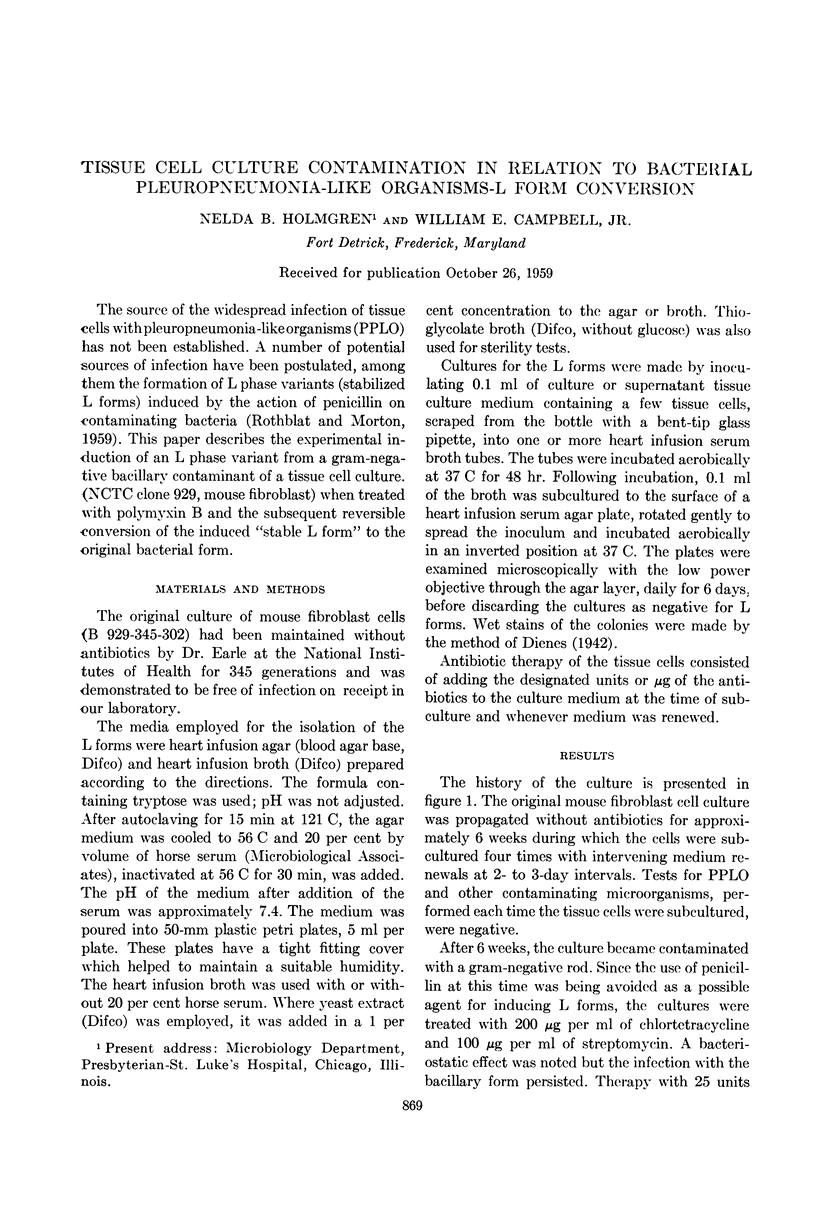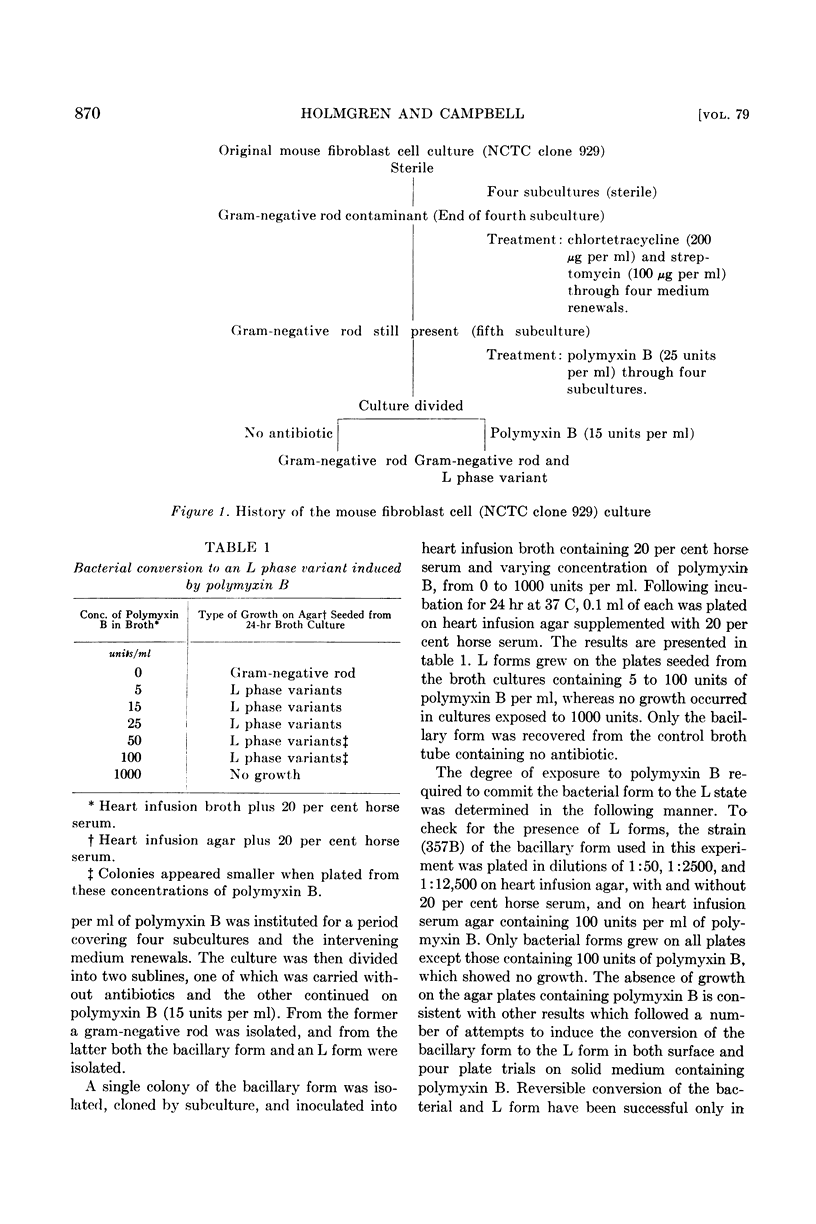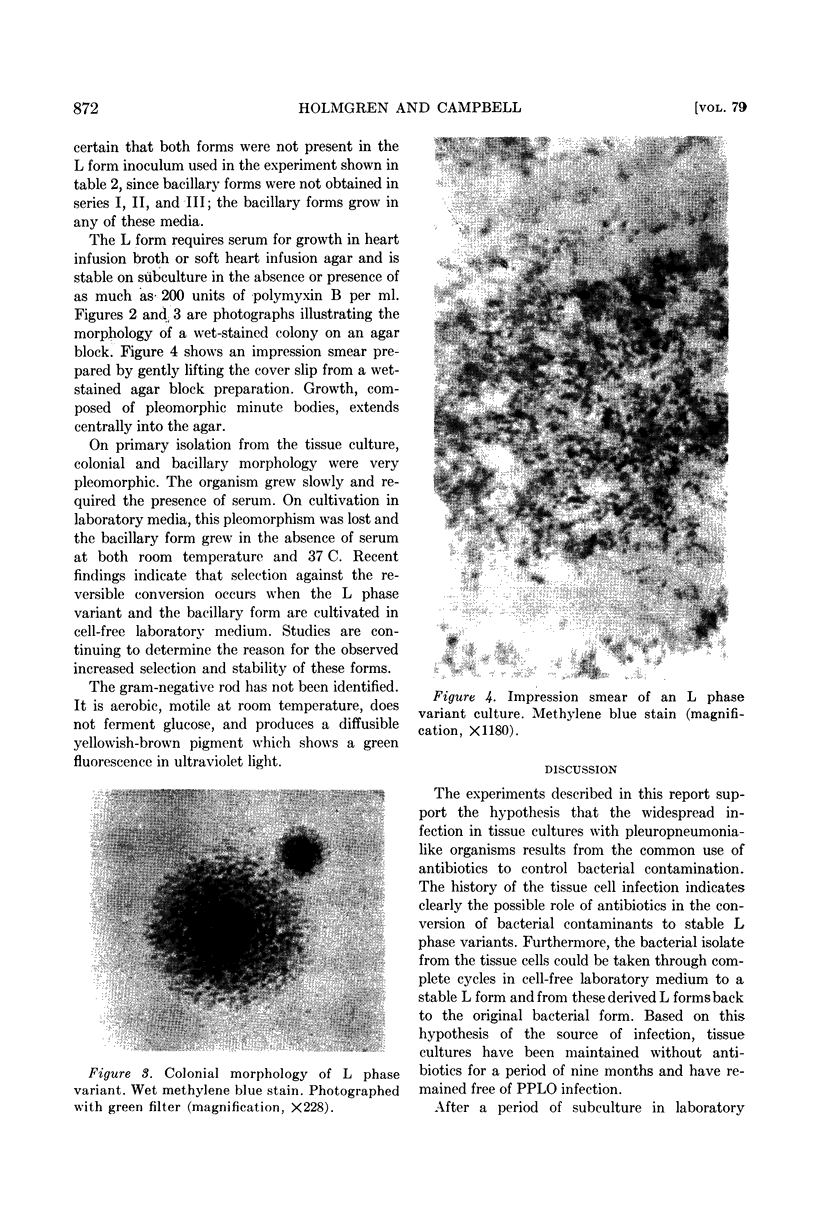Full text
PDF





Images in this article
Selected References
These references are in PubMed. This may not be the complete list of references from this article.
- Dienes L. The Significance of the Large Bodies and the Development of L Type of Colonies in Bacterial Cultures. J Bacteriol. 1942 Jul;44(1):37–73. doi: 10.1128/jb.44.1.37-73.1942. [DOI] [PMC free article] [PubMed] [Google Scholar]
- EDWARD D. G. F. An investigation of the biological properties of organisms of the pleuropneumonia group, with suggestions regarding the identification of strains. J Gen Microbiol. 1950 Sep;4(3):311–329. doi: 10.1099/00221287-4-3-311. [DOI] [PubMed] [Google Scholar]
- FEW A. V. Electron microscopy of disrupted bacteria treated with polymyxin E. J Gen Microbiol. 1954 Apr;10(2):304–308. doi: 10.1099/00221287-10-2-304. [DOI] [PubMed] [Google Scholar]
- KAWATOMARI T. Studies of the L-forms of Clostridium perfringens. I. Relationship of colony morphology and reversibility. J Bacteriol. 1958 Sep;76(3):227–232. doi: 10.1128/jb.76.3.227-232.1958. [DOI] [PMC free article] [PubMed] [Google Scholar]
- LANDMAN O. E., ALTENBERN R. A., GINOZA H. S. Quantitative conversion of cells and protoplasts of Proteus mirabilis and Escherichia coli to the L-form. J Bacteriol. 1958 May;75(5):567–576. doi: 10.1128/jb.75.5.567-576.1958. [DOI] [PMC free article] [PubMed] [Google Scholar]
- MEDILL M. A., O'KANE D. J. A synthetic medium for the L type colonies of Proteus. J Bacteriol. 1954 Nov;68(5):530–533. doi: 10.1128/jb.68.5.530-533.1954. [DOI] [PMC free article] [PubMed] [Google Scholar]
- MITCHELL P., MOYLE J. The Gram reaction and cell composition: nucleic acids and other phosphate fractions. J Gen Microbiol. 1954 Jun;10(3):533–540. doi: 10.1099/00221287-10-3-533. [DOI] [PubMed] [Google Scholar]
- NEWTON B. A. The properties and mode of action of the polymyxins. Bacteriol Rev. 1956 Mar;20(1):14–27. doi: 10.1128/br.20.1.14-27.1956. [DOI] [PMC free article] [PubMed] [Google Scholar]
- ROTHBLAT G. H., MORTON H. E. Detection and possible source of contaminating pleuropneumonialike organisms (PPLO) in cultures of tissue cells. Proc Soc Exp Biol Med. 1959 Jan;100(1):87–90. doi: 10.3181/00379727-100-24533. [DOI] [PubMed] [Google Scholar]
- WITTLER R. G., CARY S. G., LINDBERG R. B. Reversion of a pleuropneumonia-like organism to a Corynebacterium during tissue culture passage. J Gen Microbiol. 1956 Jul;14(3):763–774. doi: 10.1099/00221287-14-3-763. [DOI] [PubMed] [Google Scholar]





